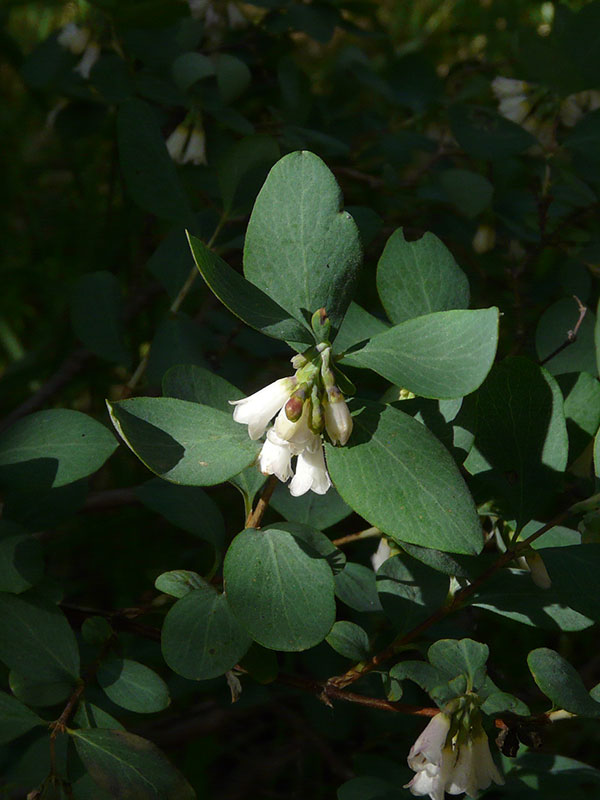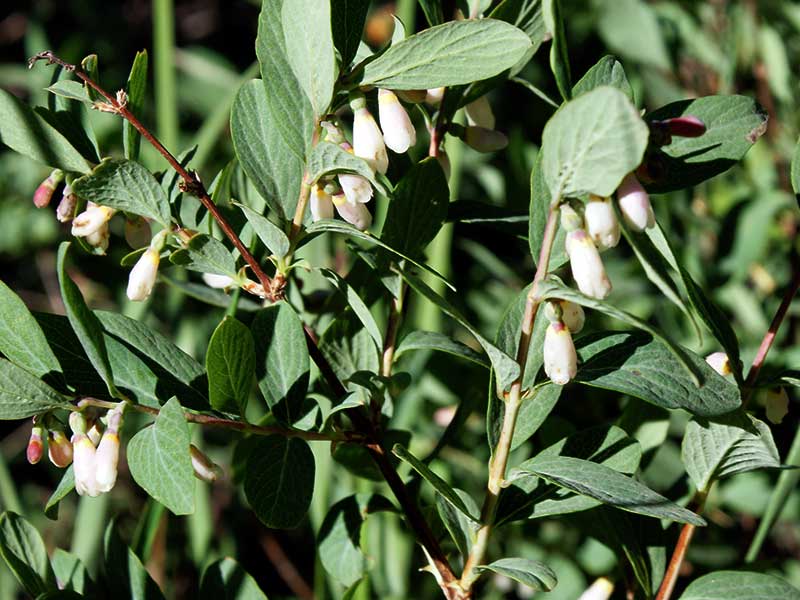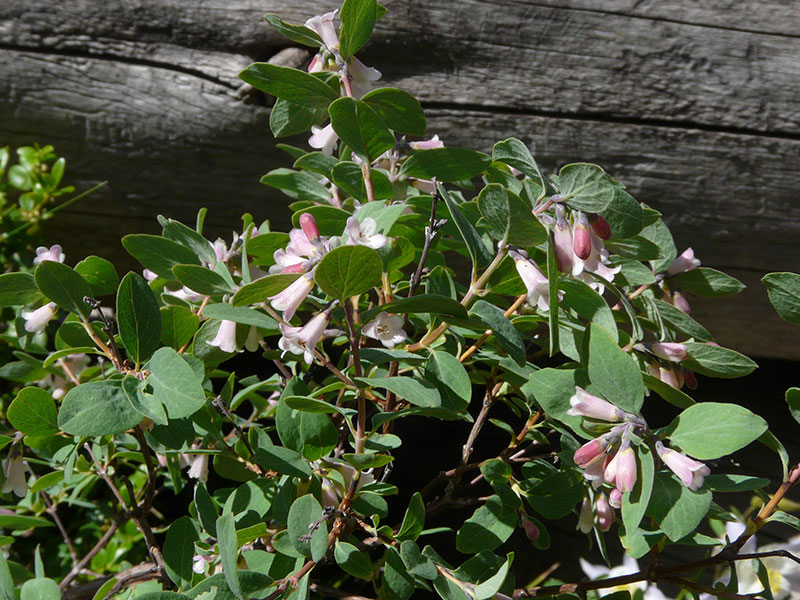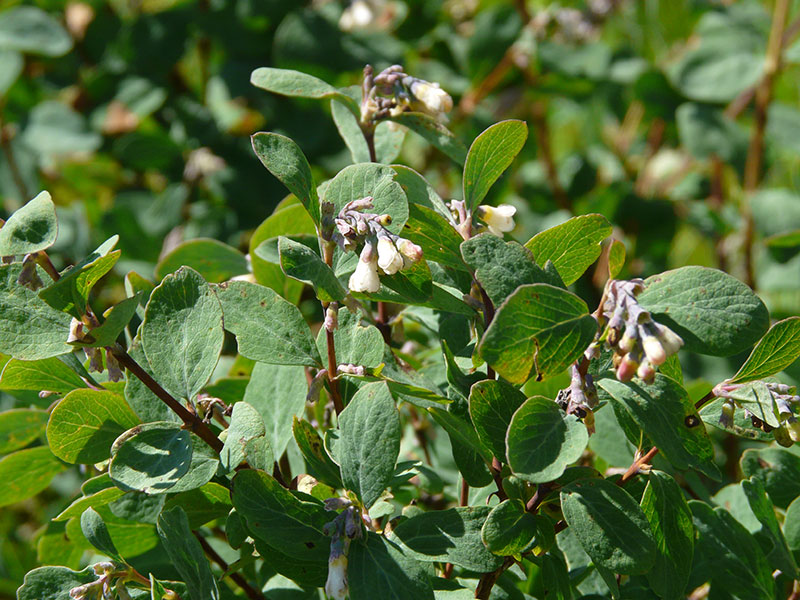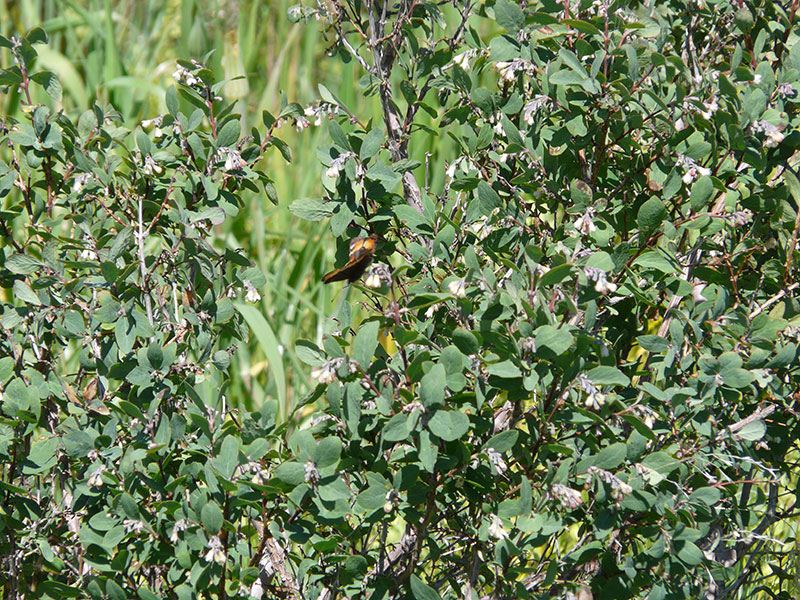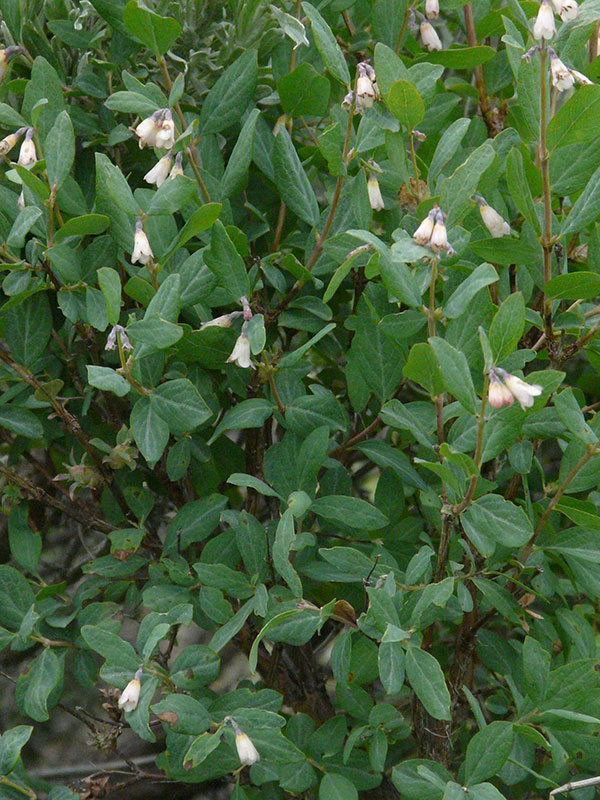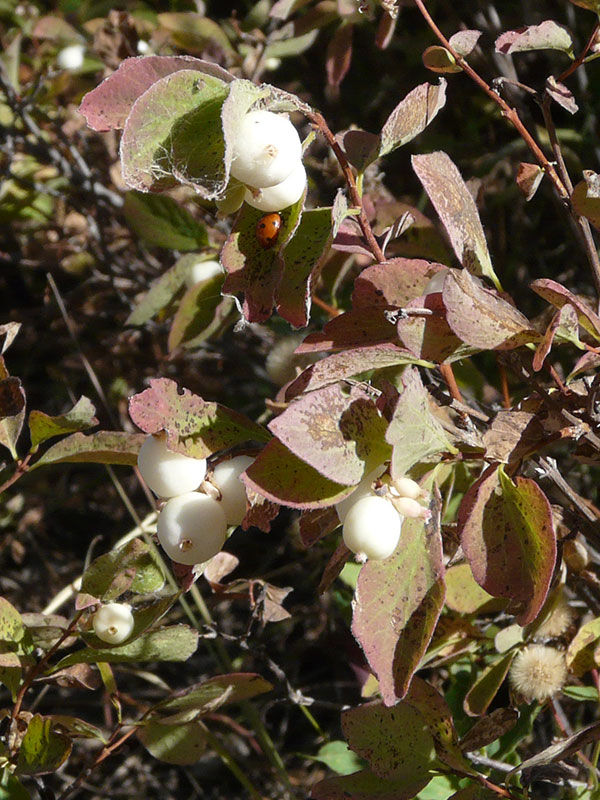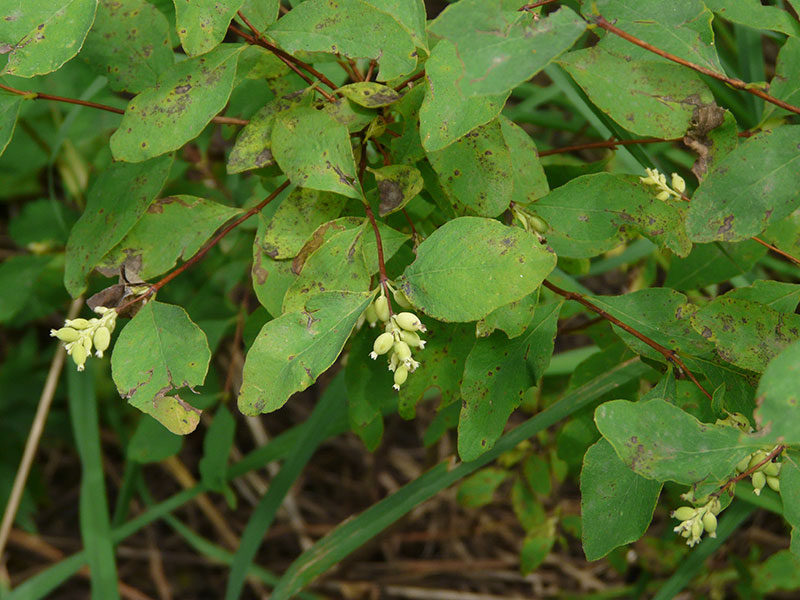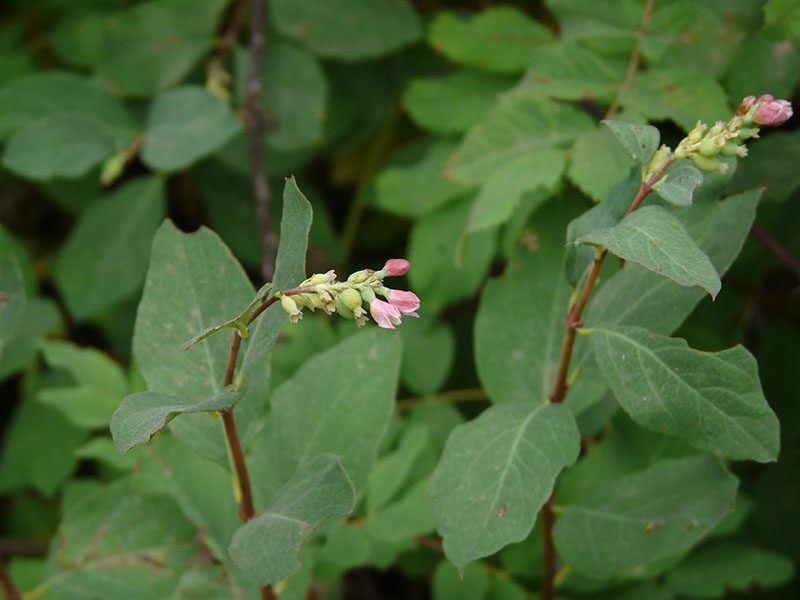Symphiocarpos oreophilus / mountain snowberry
- small pink (or white) bell or funnel shaped flowers, singly or in pairs
- shrub – upright or spreading
- most visible in late summer when the white “berries” ripen
- in the open or in canopy gaps; along the sides Forest Service roads
Snowberries are mostly low shrubs in the Valley, found along Forest Service roads or in openings in the forest. In places. you may find a large stand or sward of snowberries because in addition to reproduction by seeds, they have rhizomes from which new plants sprout. They can also spread by layering.
If you are out looking for wildflowers in the spring and early summer, you might overlook this plant, in part because it is a shrub, and like the other members of the honeysuckle family, it is a bit confusing to identify by foliage alone. By September, however, when most of the other wildflowers are just the confusing asters, the white “berries” (actually, drupes, like cherries, peaches, plums and coffee) really stand out. Don’t eat them. Inside the drupe are two nutlets, each with one seed. But even when you first see the berries, there may be some of the little half-inch bells still blooming.
Despite the fact that the drupes are toxic to humans, they overwinter and are important food for some mammals and birds. The leaves are also important spring browse for deer and elk, partly because snowberry is one of the first plants to leaf out.
| Color | |
|---|---|
| Family | |
| Blossom size | |
| Inflorescence size | |
| Inflorescence type | |
| When? | |
| Where? |
